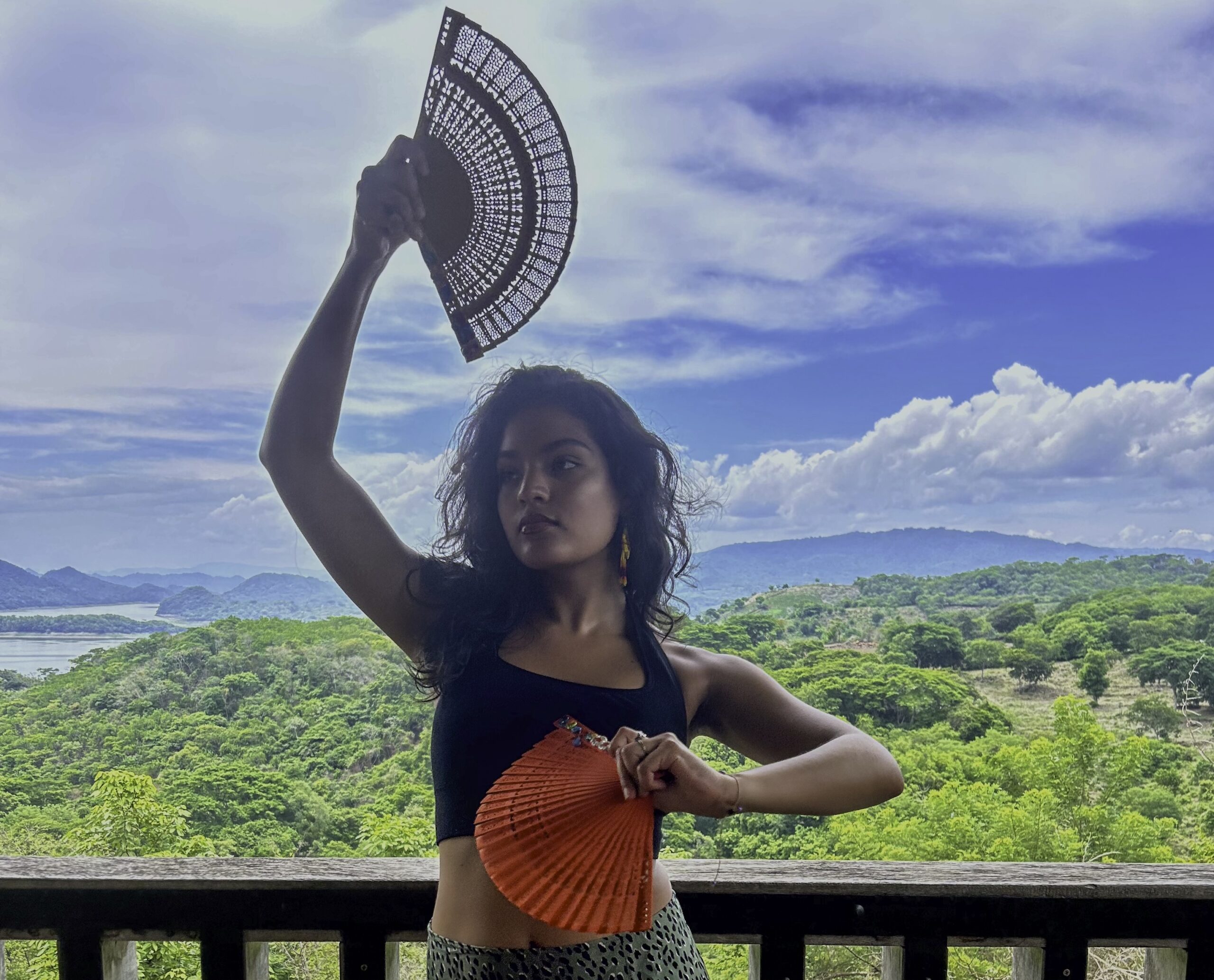Portrait of an Artist: Fernanda Rodas ’27
February 14, 2025
 Courtesy of Fernanda Rodas
Courtesy of Fernanda RodasFernanda Rodas ’27 doesn’t need words to communicate: She has dance.
“Movement has become another language for me,” Rodas said. “It’s fun to use it to regulate my emotions, and it’s also fun to just kind of delve into my curiosities.”
Rodas’s identity as a dancer is rooted in storytelling and the community she surrounds herself with. Rodas considers herself lucky to have been introduced to the dance community at a young age.
Rodas first danced when she was eight years old as part of a National Dance Institute (NDI) initiative that brings choreographers and dance teachers into schools to introduce children to this type of movement. For young Rodas, this program catalyzed her love for dancing and has provided her with a set of artistic values she still adheres to.
“Something that was really instilled in me at NDI was—we called them the core four—and that was work hard, do your best, never give up and be healthy.”
However, Rodas cited movement in the form of social dancing as something important to the culture she grew up in. Though she noted the style of dancing is more casual than dedicated training, she finds that it brings similar fulfillment and connection.
“Social dancing was a way of connecting with family members, maybe an aunt that you don’t necessarily want to talk to, but then you start dancing, and it’s just like there’s nothing else to be said,” Rodas said. “I think that it brings a lot of joy.”
Community is a key component of dance for Rodas, and she strives to find environments that nurture that larger connection. Most recently, Rodas participated as a community cast member in CONTRA-TIEMPO’s “Joy Us, Just Us” performance in Portland last week.
Los Angeles-based CONTRA-TIEMPO mixes a diverse range of dance styles to empower artists and community members alike to embody social change. While on tour, the troupe welcomes local dancers like Rodas on stage to create a multimodal audience experience. In last week’s show, the audience even sat on stage, which Rodas noted was a unique experience not only for the audience but for her as a dancer.
“You have the community on stage dancing with you, and you share these really tender human moments with strangers,” Rodas said. “You can really communicate a lot through movement.”
For Rodas, dancing in community requires and creates joy. She appreciated the emphasis and presence of joy in her performance with CONTRA-TIEMPO.
“It is kind of like a cyclical or a circular relationship where to give joy, you have to receive joy, but you have to be joy to do that,” Rodas said.
Back on campus, Rodas dances in and choreographs for Cowboys, Bowdoin’s student hip-hop group. Rodas’s choreography journey is a newer pursuit of hers, and the series of movements she crafts are often inspired by a different art form: poetry.
“When I started my choreographic journey in my senior year of high school, the first thing that I did was write, and then that was the blueprint for the dance,” Rodas said. “I’ve found that that’s been a really helpful way to choreograph when it comes to storytelling.”
Storytelling features in Rodas’s studies as well. She is an English and dance double major and a Latin American, Caribbean, and Latinx Studies minor, with a goal to take a dance class every semester she is here.
In high school, Rodas felt that dance was often cast to the sidelines as she pursued academics. Now, Rodas loves that dance can be academic and has learned a lot from this perspective.
“Coming into college, I was really excited to take dance as a class, like as an ‘academic,’ and I think that’s really allowed me to see the depth and complexity that movement has had throughout history, and how it really does have the potential to change how we view the world now. I think it’s important to look at movement that way,” Rodas said.
As part of her dance classes, Rodas has had the opportunity to learn from faculty and guest artists. Rodas highlighted Deborah Goff, who visited campus in the fall, as a recent inspiration of hers. Rodas participated in a performance with Goff and campus community members around the election in November, which Rodas described as a powerful and rewarding way of processing the intense emotions many experienced during that time.
For Rodas, dance is a mechanism for movement and change, and she hopes young people continue to be introduced to dance early on, just like her.
“Movement is such a powerful tool for communication and change,” Rodas said. “It is definitely something that we need to be introducing to every kid.”

Comments
Before submitting a comment, please review our comment policy. Some key points from the policy: